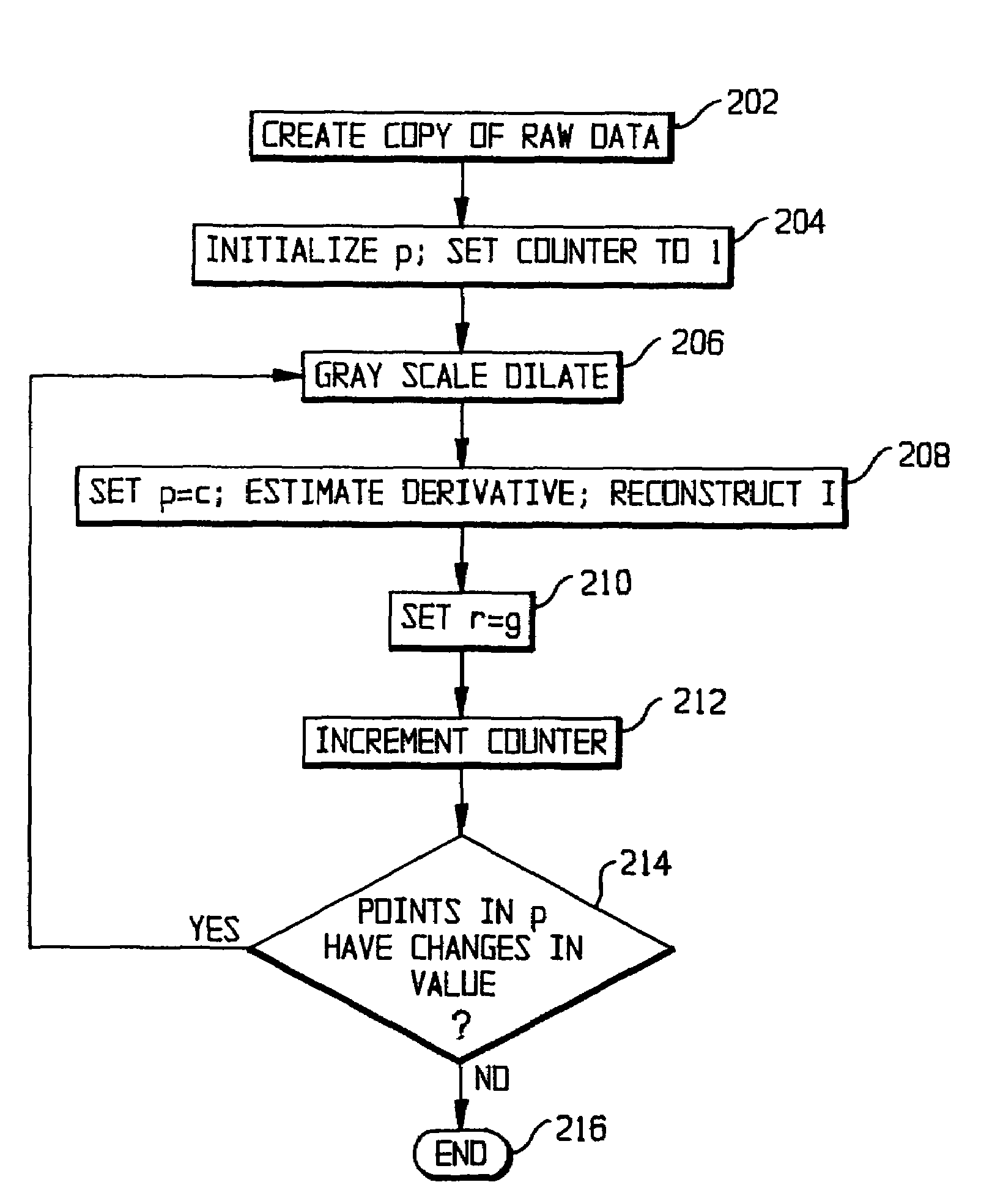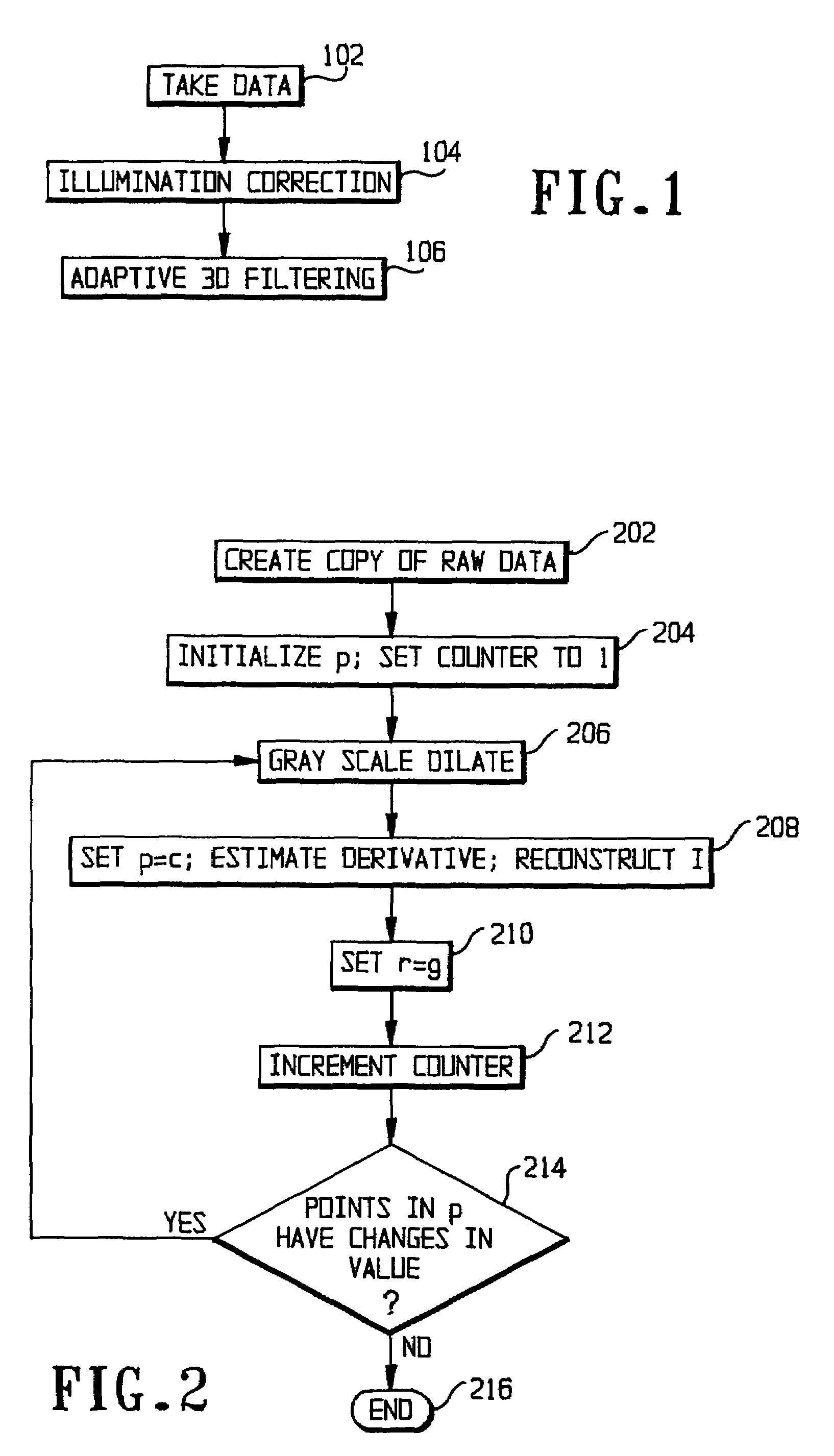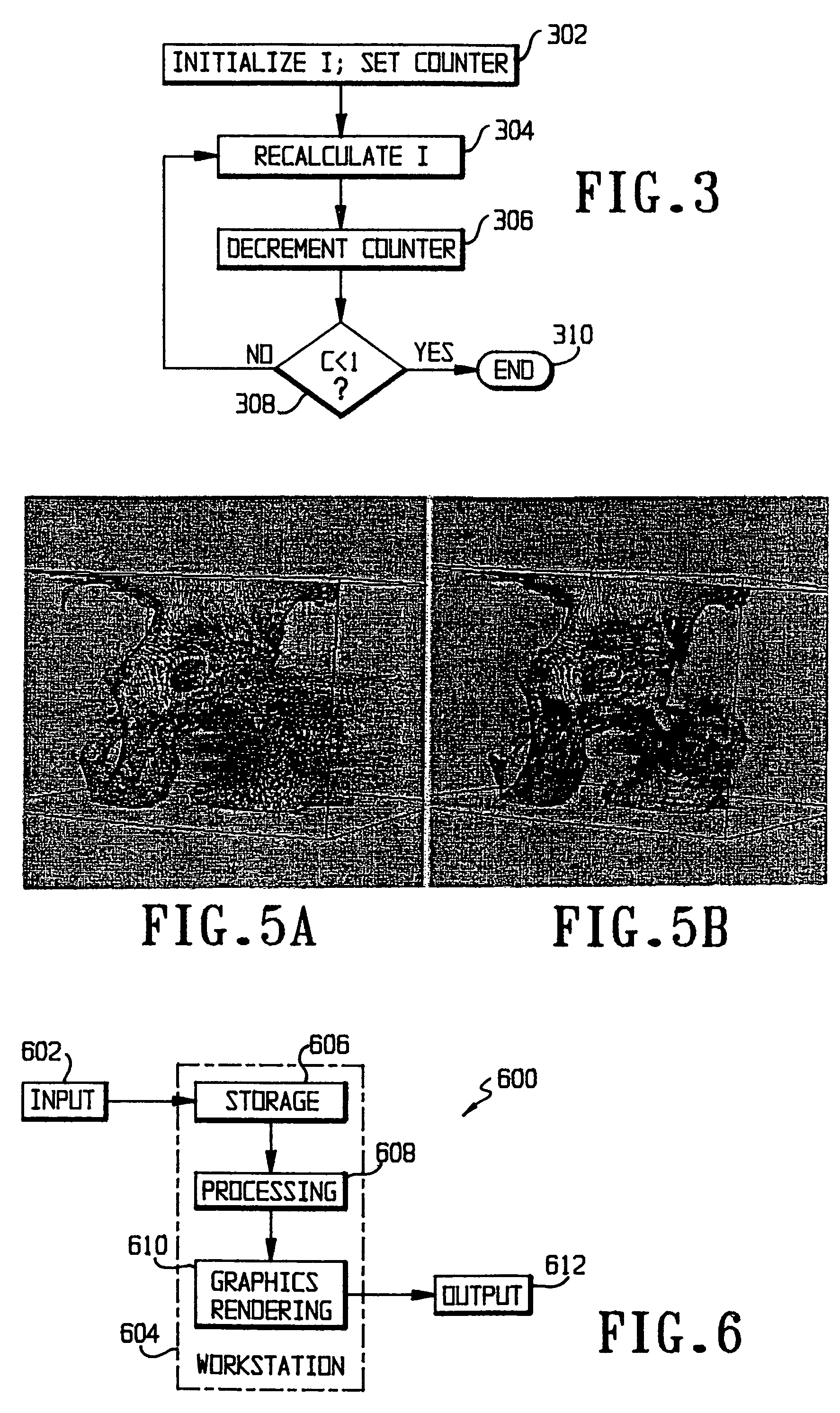System and method for reducing or eliminating streak artifacts and illumination inhomogeneity in CT imaging
a computed tomography and streak artifact technology, applied in tomography, image enhancement, instruments, etc., can solve the problems of inhomogeneous estimation of tissue density, streak artifacts, starburst artifacts, etc., and achieve the effect of reducing or eliminating streak artifacts
- Summary
- Abstract
- Description
- Claims
- Application Information
AI Technical Summary
Benefits of technology
Problems solved by technology
Method used
Image
Examples
Embodiment Construction
[0016]The preferred embodiment of the present invention will now be set forth in detail with reference to the drawings.
[0017]FIG. 1 shows an overview of the process carried out in the preferred embodiment. After the raw data have been taken in step 102, the process includes two steps: the illumination correction of step 104 and the adaptive 3D filtering of step 106. Those two steps will be explained in detail.
[0018]From a set of reconstructed CT images f(x, y) that contain a metal implant, the algorithm proceeds to stack those images in a three dimensional (3D) volumetric image f(x, y, z). Then, the algorithm gray scale dilates every single slice to estimate a propagation potential field p(x, y, z) of the streak artifacts and to estimate the inhomogeneous illumination I(x, y, z). The estimation of the potential field p(x, y, z) via gray scale dilation is performed through the following steps shown in FIG. 2:
[0019]Step 202. Create a copy of the raw data: r(x, y, z)=f(x, y, z)
[0020]St...
PUM
 Login to View More
Login to View More Abstract
Description
Claims
Application Information
 Login to View More
Login to View More - R&D
- Intellectual Property
- Life Sciences
- Materials
- Tech Scout
- Unparalleled Data Quality
- Higher Quality Content
- 60% Fewer Hallucinations
Browse by: Latest US Patents, China's latest patents, Technical Efficacy Thesaurus, Application Domain, Technology Topic, Popular Technical Reports.
© 2025 PatSnap. All rights reserved.Legal|Privacy policy|Modern Slavery Act Transparency Statement|Sitemap|About US| Contact US: help@patsnap.com



